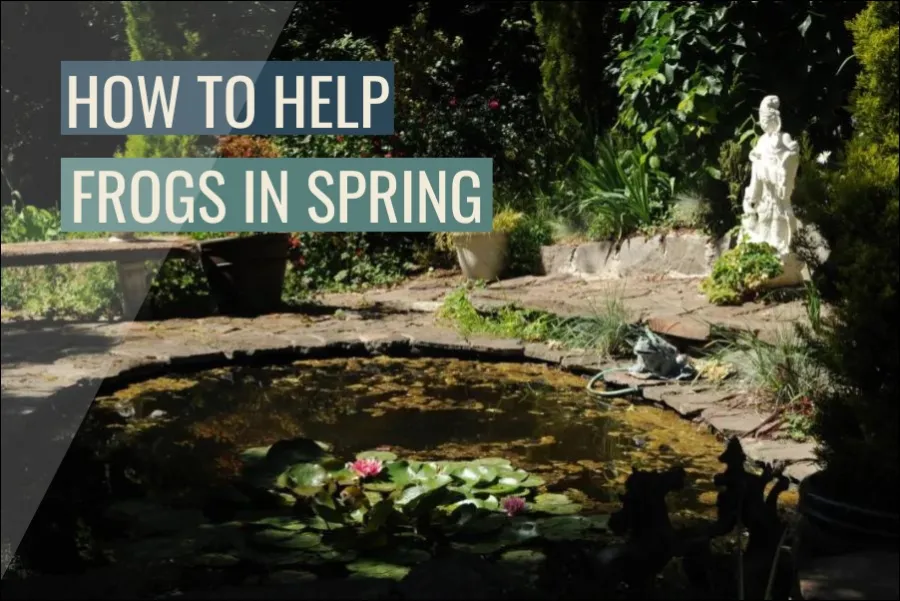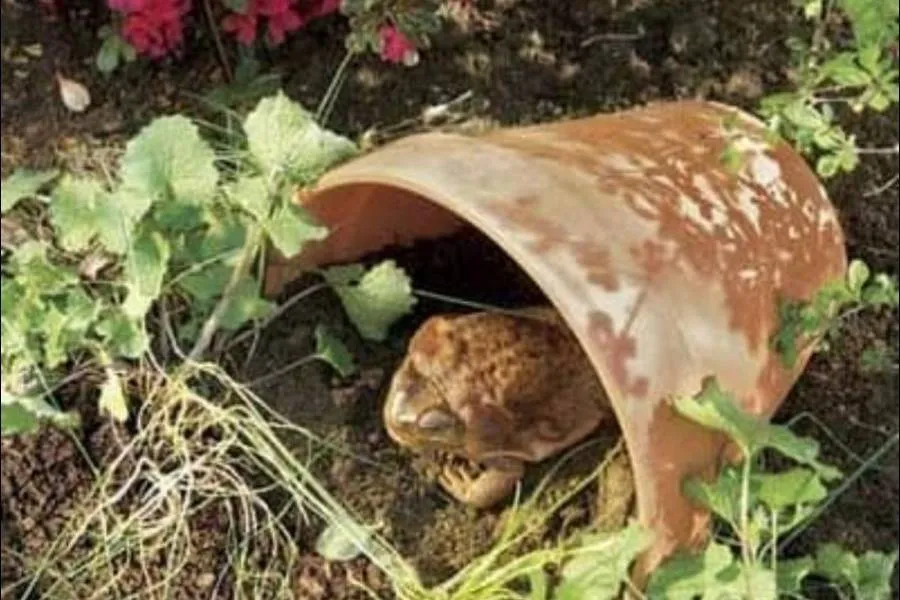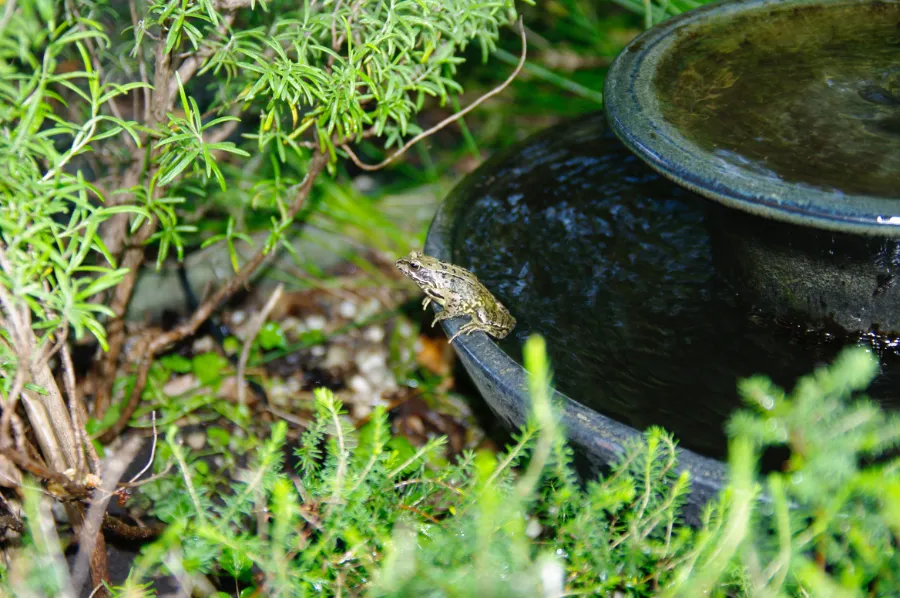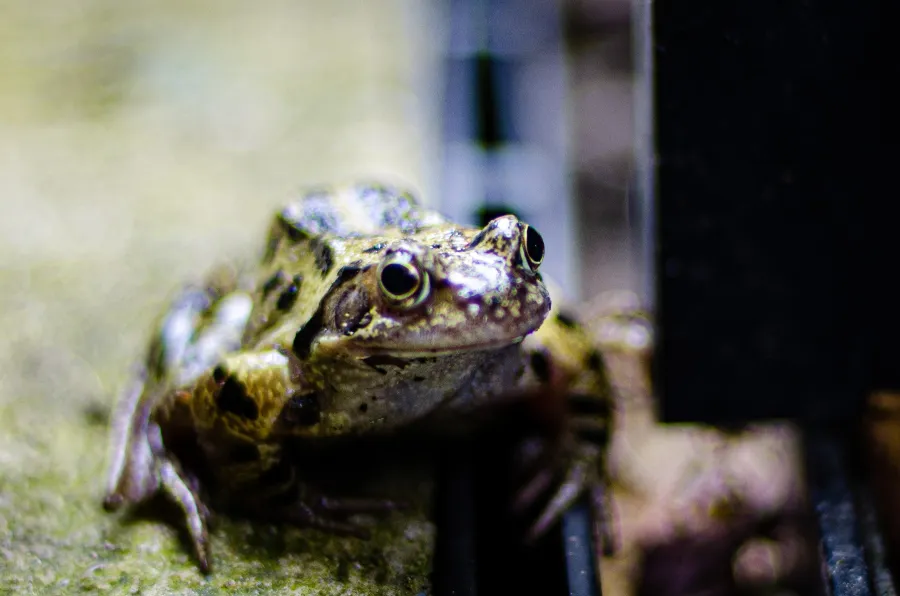
Spring is a time of renewal and growth, and it is also an important time for frogs.
As temperatures rise and rain becomes more common, frogs emerge from their winter hiding places and begin to breed. However, frogs face many challenges in the modern world, and they need our help to thrive.
Help frogs in spring by providing a suitable habitat and protecting against predators. Offer food and participate in citizen science. Build or install artificial ponds and plant native flora. Reduce pesticide use and try natural alternatives. Educate others about the importance of frog conservation.
Here are some simple things you can do to support frog populations in your area.
Whether you live in the city or the countryside, there are many ways you can make a difference for these fascinating and important animals.
Providing a suitable habitat
One of the most essential things you can do in the spring to aid frogs is to offer a suitable environment. This might involve establishing a frog-friendly landscaping or building or installing artificial ponds or wetlands. Ponds should have a shallow and deep end, as well as abundance of aquatic vegetation to provide frogs with cover and food. Plant natural vegetation in your yard to attract insects and other invertebrates, which will offer food for the frogs. You may also give frogs with refuge by placing rocks or log piles, or by constructing a habitat such as a “frog hotel.”

Protecting against predators
Many species, including snakes, birds, and mammals, feed on frogs. To keep predators out, you may put fence or netting around your pond or garden. You may also lower the chance of predation by providing lots of cover and hiding places for the frogs. Installing plants or structures such as rocks or logs, for example, can provide frogs with safe havens.
Offering a source of food
In addition to providing protection and refuge, it is critical to supply frogs with a food source. This can be accomplished by planting native plants that attract insects and other invertebrates, or by constructing a small pond or wetland that will provide habitat for a varied range of aquatic life. You may also augment the frogs’ food with modest amounts of live or frozen invertebrates like crickets or worms.
Monitoring and conserving frog populations
It is critical to monitor and protect local frog populations in the spring to assist frogs. This can be accomplished by engaging in citizen science programs such as frog population monitoring or data collection on frog behavior. Frog sightings can also be reported to local groups or agencies, which can aid in tracking the health and dispersion of frog populations. We may better understand the variables impacting frog populations by monitoring them, and we can take actions to safeguard and conserve these vital species.
Building or installing artificial ponds or wetlands
If your property does not already have a pond or marsh, you may aid frogs by developing or installing one. Excavating a hole and filling it with a pond liner or other waterproof material is how artificial ponds are made. You may also install a pre-formed pond or a pond kit. When constructing or installing a pond, it is critical to consider the pond’s size, shape, and depth, as well as the plants and other elements that will be included. Ponds should have a shallow and deep end, as well as abundance of aquatic vegetation to provide frogs with cover and food.

Planting native flora to provide cover and food for frogs
If your property does not already have a pond or marsh, you may aid frogs by developing or installing one. Excavating a hole and filling it with a pond liner or other waterproof material is how artificial ponds are made. You may also install a pre-formed pond or a pond kit. When constructing or installing a pond, it is critical to consider the pond’s size, shape, and depth, as well as the plants and other elements that will be included. Ponds should have a shallow and deep end, as well as abundance of aquatic vegetation to provide frogs with cover and food.
Reducing the use of pesticides and other chemicals in your yard or garden
Pesticides and other chemicals are toxic to frogs and other species, therefore they should be used sparingly or not at all. Instead, consider utilizing natural alternatives such as blooming plants that attract predatory insects or physical barriers such as netting or screens to keep pests at bay. Non-toxic pest management methods include hand-picking or hosing off bugs, as well as introducing predators such as birds or bats that will consume the pests. Reduce your usage of chemicals to make the environment safer for frogs and other species.
Participating in citizen science projects or reporting frog sightings to local organizations
You may help monitor and protect local frog populations by participating in citizen science programs or reporting frog sightings to local groups. Citizen science initiatives are research projects in which non-experts participate, and they may be an excellent way to get engaged in conservation efforts. Citizen science initiatives involving frogs include monitoring frog populations, collecting data on frog behavior, and assisting in the identification and mapping of frog habitats. Frog sightings can also be reported to local groups or agencies, which can aid in tracking the health and dispersion of frog populations.
Educating others about the importance of frogs and the steps that can be taken to protect them
Finally, in the spring, you may aid frogs by teaching others about the importance of these species and the efforts that can be done to protect them. Frogs perform significant functions in the ecosystem and are environmental health indicators. You may help to generate support for conservation efforts and urge others to take action by increasing awareness about the importance of frogs and the risks they face. You may educate others about frogs by posting material on social media, chatting to friends and family about frogs, or engaging in local frog conservation events or activities.

The difference in helping frogs in spring compared to other seasons
There are a few significant distinctions between aiding frogs in the spring and other seasons:
- Breeding season: Because spring is frequently the breeding season for many frog species, it is a crucial period for reproduction and survival. Frogs are more active and conspicuous during this period, and they may be more vulnerable to problems such as predation and habitat loss.
- Hibernation: To endure the cold temperatures, several frog species may hibernate in the winter. They emerge from their winter hiding spots and become more active in the spring.
- Food availability: As insects and other invertebrates become more active in the spring, the availability of food for frogs may rise. This can be a critical period for frogs to save energy for the mating season.
- Temperature: Spring temperatures are often warmer than winter temperatures, making frogs more comfortable. However, frogs still require access to shade and water to help them regulate their body temperature.
The main difference between aiding frogs in spring and other seasons is that it is a period of heightened activity and reproduction for many species of frogs, and it is critical to give them with the nutrients and care they require to survive.
Where is the best place to put a frog?
The optimum location for a frog depends on a variety of elements, including the kind of frog, the climate and weather conditions, and the availability of food and shelter. In general, providing frogs with an environment that satisfies their needs and allows them to thrive is critical.
Consider the following factors while choosing a frog habitat:
- Access to water: Frogs require clean, fresh water to consume and to keep their skin moisturized.
- Frogs require locations to hide and seek safety from predators and adverse weather conditions.
- Temperature: Frogs are ectothermic, which means that the temperature of their surroundings influences their body temperature. It is critical to create an environment for frogs that is within their optimal temperature range.
- Food availability: To survive, frogs require a food supply, such as insects and other invertebrates. It is critical to select a site with an adequate amount of food for the frog.
- Other animals: When choosing a site for a frog, it is critical to consider the existence of other species. Because frogs are sensitive to predation by other animals, it is critical to select a place that is reasonably safe from prospective predators.
Overall, the greatest environment for a frog is one that fits its needs and allows it to thrive.
Benefits of having frogs in your garden
Having frogs in your garden may give several benefits to both your plants and the whole ecology. Frogs may help decrease pest populations by consuming insects that might harm your plants, as well as improve soil health by contributing nutrients and stimulating microbial activity. Furthermore, frogs may pollinate flowers and disseminate plant seeds, promoting the development and reproduction of your plants. If you want to understand more about the precise methods in which frogs aid plants, you can read our article “How Frogs Help Plants.” By building a frog-friendly garden, you can not only help your plants’ health and survival, but you can also help the ecosystem’s general health and well-being.
In conclusion
Spring is a season of regeneration and development, and it is also a critical period for frogs. Frogs emerge from their winter hiding spots and begin to reproduce when temperatures increase and rain becomes more regular. However, frogs confront several problems in the contemporary environment and require our assistance to survive. Here are some basic things you can take to help local frog populations:
Create a suitable habitat: This might involve establishing a frog-friendly garden or building or installing artificial ponds or wetlands. Ponds should have a shallow and deep end, as well as abundance of aquatic vegetation to provide frogs with cover and food. Plant natural vegetation in your yard to attract insects and other invertebrates, which will offer food for the frogs. You may also give frogs with refuge by placing rocks or log piles, or by constructing a habitat such as a “frog hotel.”
Preventing predators: Many species, including snakes, birds, and mammals, feed on frogs. To keep predators out, you may put fence or netting around your pond or garden. You may also lower the chance of predation by providing plenty of food.
